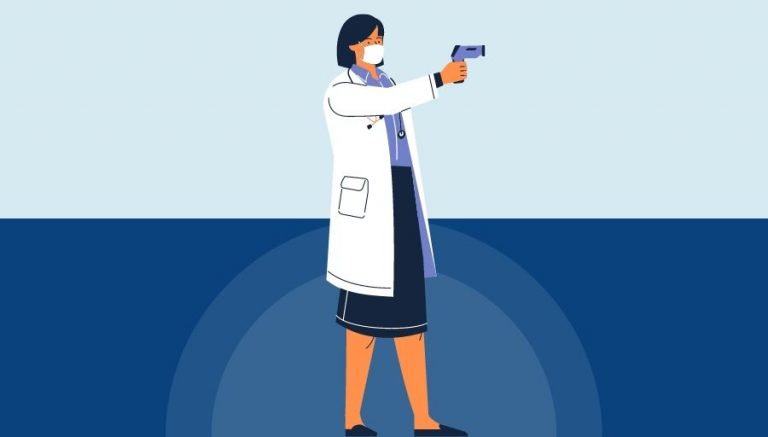How To Use CPT Code 43245
CPT 43245 describes a specific procedure involving the dilation of gastric or duodenal strictures during an esophagogastroduodenoscopy (EGD). This article will cover the official description, procedure, qualifying circumstances, appropriate usage, documentation requirements, billing guidelines, historical information and billing examples.
1. What is CPT Code 43245?
CPT 43245 is used to describe a procedure in which a healthcare provider inserts a flexible endoscope through the mouth and down into the esophagus, stomach, and duodenum to dilate one or more gastric and/or duodenal strictures. This procedure is performed to alleviate the narrowing of the gastric or duodenal passage, allowing the contents of the stomach and duodenum to pass into the lower gastrointestinal tract more easily.
2. Official Description
The official description of CPT code 43245 is: ‘Esophagogastroduodenoscopy, flexible, transoral; with dilation of gastric/duodenal stricture(s) (eg, balloon, bougie).’ It is important to note that this code should not be reported in conjunction with certain other codes, as specified in the notes.
3. Procedure
- After administering anesthesia, the healthcare provider inserts a flexible endoscope through the patient’s mouth and down the throat into the esophagus, stomach, and duodenum.
- The provider carefully inspects the upper gastrointestinal tract for any strictures or narrowings.
- If a gastric or duodenal stricture is identified, the provider proceeds to dilate it using a bougie, balloon, or another appropriate device.
- In the case of balloon dilation, the physician inserts a deflated balloon into the stricture and inflates it several times to gradually increase its diameter.
- Once the desired level of dilation is achieved, the balloon or other device is removed.
- At the conclusion of the procedure, the provider withdraws the endoscope from the patient’s gastrointestinal tract.
4. Qualifying circumstances
CPT 43245 is typically performed on patients who have gastric or duodenal strictures that are causing obstruction or significantly impeding the passage of contents through the gastrointestinal tract. These strictures may be due to various underlying conditions, such as scarring, inflammation, or tumors. The procedure should only be performed by a qualified healthcare provider who has the necessary expertise and training in performing esophagogastroduodenoscopy and dilation procedures.
5. When to use CPT code 43245
CPT code 43245 should be used when a healthcare provider performs an esophagogastroduodenoscopy and dilates gastric or duodenal strictures during the procedure. It is important to note that this code should not be reported with certain other codes, as specified in the notes. It is crucial to review the documentation carefully to ensure accurate coding and to select the code that best represents the associated procedure.
6. Documentation requirements
To support a claim for CPT 43245, the healthcare provider must document the following information:
- Patient’s diagnosis and the presence of gastric or duodenal strictures
- Details of the procedure, including the specific method of dilation used (e.g., bougie, balloon)
- Date of the procedure
- Start and end time of the procedure
- Any complications or adverse events that occurred during the procedure
- Signature of the healthcare provider performing the procedure
7. Billing guidelines
When billing for CPT 43245, it is important to ensure that the procedure meets the specific criteria outlined in the code description. Additionally, it should not be reported in conjunction with certain other codes, as specified in the notes. It is also essential to follow any specific billing guidelines provided by the payer or relevant coding guidelines. Proper documentation is crucial to support the billing of this procedure.
8. Historical information
CPT 43245 was added to the Current Procedural Terminology system on January 1, 1990. There have been some changes to the code over the years, including updates to the code description and the addition of notes to clarify its usage.
9. Examples
- A gastroenterologist performing an esophagogastroduodenoscopy and dilating a gastric stricture using a balloon for a patient with a history of peptic ulcer disease.
- A general surgeon performing an esophagogastroduodenoscopy and dilating a duodenal stricture using a bougie for a patient with Crohn’s disease.
- An interventional radiologist performing an esophagogastroduodenoscopy and dilating both gastric and duodenal strictures using a balloon for a patient with gastric cancer.
- A gastroenterologist performing an esophagogastroduodenoscopy and dilating a gastric stricture using a balloon for a patient with a history of gastric bypass surgery.
- A gastroenterologist performing an esophagogastroduodenoscopy and dilating a duodenal stricture using a bougie for a patient with a history of chronic pancreatitis.


